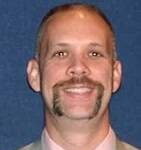“Life is completely changed for thousands of American boys on this side of the earth. For at last they are in there fighting.”
Hoosier war correspondent Ernie Pyle wrote those words on Dec 1, 1942, while on assignment with U.S. forces in Algiers.
The United States had entered World War II in December 1941 after the Japanese bombing of Pearl Harbor. Exactly one year later Pyle witnessed the first battle action in northern Africa; his columns brought war’s reality into 14 million homes via the pages of daily newspapers.
“You dig ditches for protection from bullets and from the chill north wind off the Mediterranean. There are no more hot-water taps. There are no post exchanges where you can buy cigarettes. There are no movies.”
This was the human side of a global conflict that changed the world — and Indiana.
More than 363,000 Hoosiers served in the armed forces during World War II, and more than 10,000 died. On the home front, Indiana dropped everything to support the war effort. Hoosier citizens purchased $3 billion in war bonds; manufacturers produced $3.2 billion in war goods — from Studebaker military trucks in South Bend to P-47 Thunderbolt fighter planes at Republic Aviation in Evansville.
At the start of the war, Indiana had two major military installations; by the end, 31 dotted the landscape, including 10 ordnance plants, seven air bases and five training camps.
As in all wars, the daily acts of heroism were what distinguished Hoosiers, and Pyle was no exception. His placement on the ground, eye-to-eye with fighting forces, changed the way journalists covered war — and the way civilians saw it.
Born in 1900 on a farm near Dana, Pyle had enlisted in World War I but was still in training when the armistice was declared. He studied journalism at Indiana University, leaving just short of graduation in order to take his first newspaper job in La Porte. His next job was with the Scripps-Howard newspaper chain for which he would do his prize-winning war reporting.
Like many of the doughboys he covered, Pyle was killed while doing his job, hit by Japanese gunfire April 18, 1945, on an island just west of Okinawa.
A draft of a column he was preparing for the war’s conclusion was found in his pocket the day he died, and included a haunting description of war dead “scattered over the hillsides and in the ditches along the high rows of hedge throughout the world … Dead men in such monstrous infinity that you come almost to hate them.”
Pyle’s life is remembered at the Ernie Pyle World War II Museum in Dana by the Friends of Ernie Pyle, a nonprofit organization that rescued his birth home from demolition in the mid 1970s and took ownership of the site from the state of Indiana in 2011.
“His legacy is not just his writing,” notes Stephen Key, executive director of the Hoosier State Press Association and a member of the site’s board. “He told family members back home what their loved ones were experiencing. When you read his columns, you can almost see and hear and smell what was going on.”
The museum is open to the public Fridays, Saturdays and Sundays from May through Veterans Day. It is available year-round for group tours by appointment.
Andrea Neal is an adjunct scholar with the Indiana Policy Review. Contact her at [email protected].




